The Real Lizzie Borden
Acquitted by the courts but convicted in a nursery rhyme, Lizzie Borden hacked out quite a legacy.
Lizzie Borden took an ax and gave her mother forty whacks. That’s thirteen wounds more than those inflicted by Jodi Arias. Most people think ax murder movies started with a massacre in Texas, but Joan Crawford hacked out a manically informed performance in the 1964 film Strait-Jacket.
The pioneering 19th century Fall River, Mass., woman who got heads rolling even got away with it. Lizzie Borden was tried, acquitted, and went on to live a fairly full and crime-free life, give or take a charge of kleptomania. The Borden murders are a 124-year-old cold case, and a new film is bringing new eyes to old evidence. Director Craig William Macneill’s Lizzie stars Chloë Sevigny (Boys Don’t Cry, Big Love) as “the notorious woman at the heart of one of the most enduring mysteries in American history.” Kristen Stewart plays her partner in patricide and step-matricide.
Lizzie Borden became part of pop culture when kids skipped rope to the nursery rhyme. Agnes de Mille set the story to dance in her 1954 ballet Fall River Legend. The 1965 opera Lizzie Borden gave her a melody which was recently updated as a rock opera called Lizzie: The Musical. Elizabeth Montgomery, the witch Samantha from Bewitched, depicted Borden as a calculating and oppressed heir in the 1975 TV movie The Legend of Lizzie Borden. Christina Ricci turned her into a true crime antihero in the Lifetime movie Lizzie Borden Took an Ax.
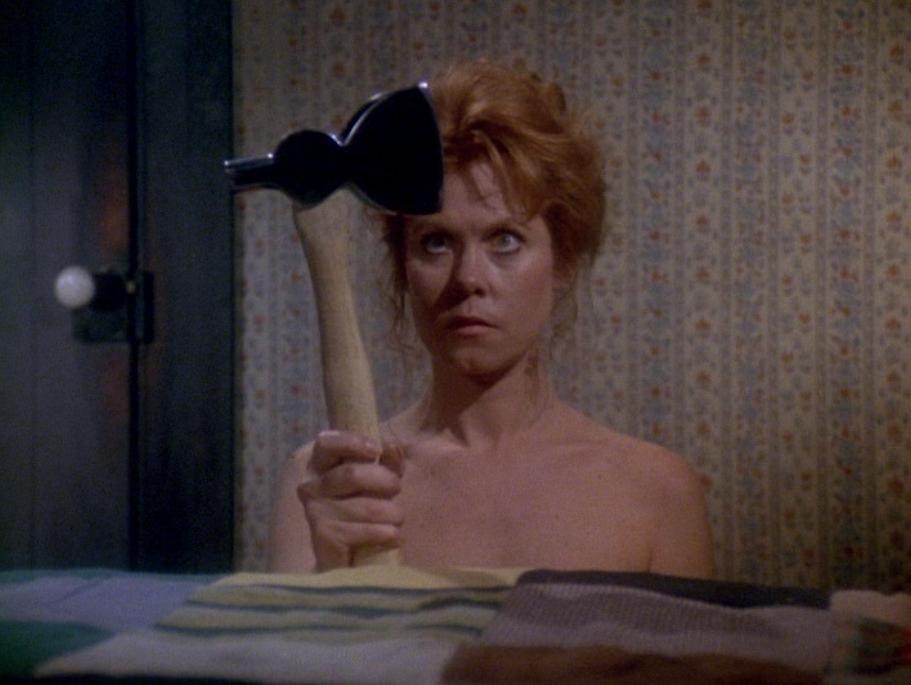
The First Cuts Are the Deepest
Borden wasn’t the first person on record for an axe murder. That was the knight Wickbert who killed Wenno von Rohrbach in 1209, and I think his main crime was bringing an ax to a sword fight against the Master of the Livonian Brothers of the Sword. And Borden wasn’t the first woman to wield a useful tool for nefarious purposes. Frances Stewart Silver was the first white woman put to death in Burke County, North Carolina, for her ultimate split from Charles Silver. Frances’ husband was hacked to death and dismembered in their cabin on December 22, 1831. Some say Frances was a jealous wife, others that she was an abused one, but Silver never confessed. She also left no evidence, except for some ashes, and pieces of bone and flesh mixed into a mortar hole.
An all-male jury ruled in Frances Stewart Silver’s favor, but the Governor wanted her hanged. She was broken out of jail, but was discovered masquerading as a man a few days later. The convicted murderer is buried in an unmarked grave behind a Tavern. Late at night, as the old stories go, passersby often hear nothing.
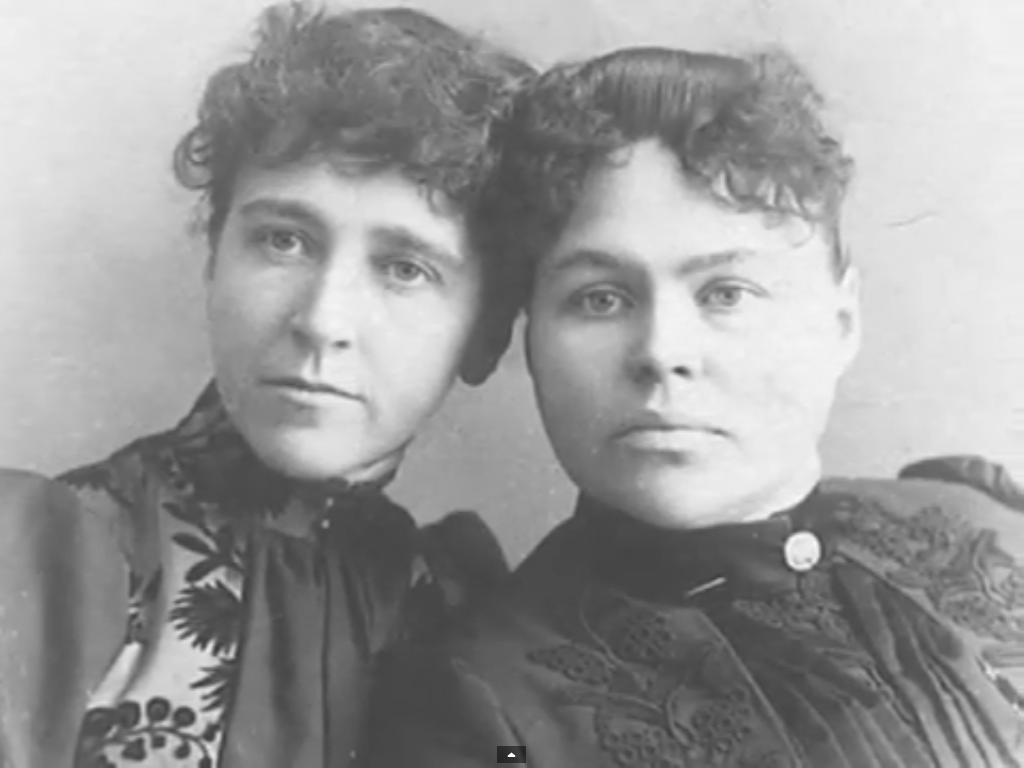
Hacking Out an American Tradition
Accused and indicted for a brutal murder in New England, Lizzie Borden was acquitted in the courts, but convicted in a nursery rhyme. She was one of the first rogues to get the dubious distinction. It grew organically out of the incident and no one took credit for it. Perhaps the author thought the rhyme itself was cursed like the classic playground hit “Freddy’s Coming for You.” Freddy Krueger’s theme song in Nightmare on Elm Street is an adaptation of the children’s nursery rhyme, “One, Two, Buckle My Shoe,” and it goes “One, two, Freddy’s coming for you. Three, four, better lock your door. Five, six, grab a crucifix. Seven, eight, gonna stay up late. Nine, ten, never sleep again.”
The anonymous author of Lizzie Borden’s cautionary rhyme changed the numbers to fit the cadence. Lizzie’s dad was whacked 10 times while her stepmother sustained 19 blows from the axe. But that means little to the jump-rope crowd.
Lizzie was a toddler when her biological mother, Sarah Anthony Morse Borden, died of uterine congestion and spinal disease at the age of 39 on March 26, 1863. Lizzie’s father Andrew married Abby Durfee Gray three years later. Lizzie and her sister Emma Lenora Borden lived with the pair into adulthood, but never accepted Abby as their mother. According to some reports, and alluded to in the Lizzie trailer, Lizzie and her sister Emma thought the evil stepmother was only interested in their father’s money. While the family appeared to be a healthy one to neighbors at the time, the Borden home was dysfunctional.
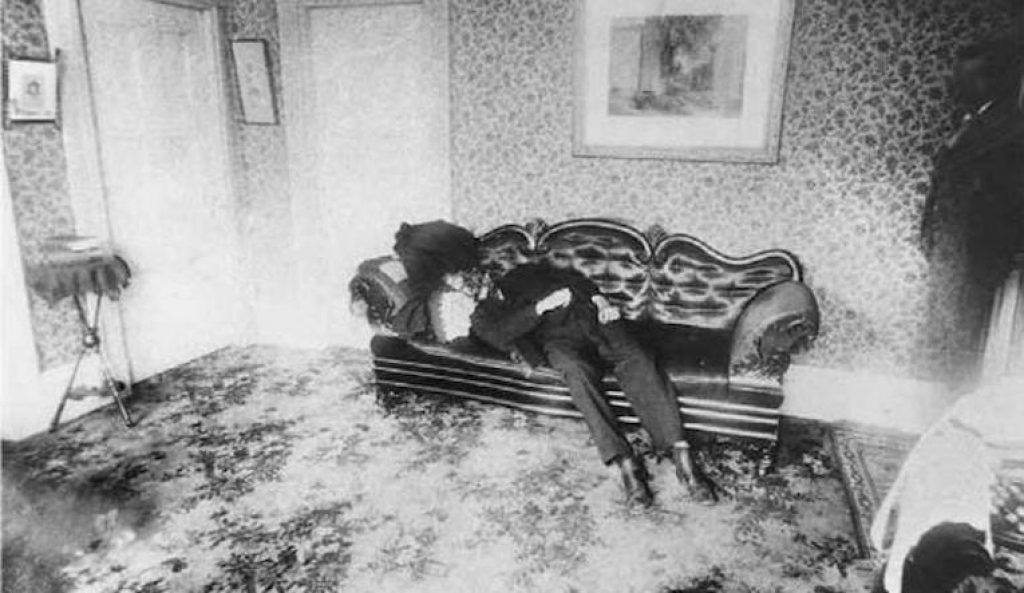
No Bad Deed Goes Unpublished
According to reports Lizzie Borden found her father dead on a sofa on August 4, 1892. He had been killed with an axe while he was asleep. When the police searched the Borden residence they found Abby was also killed with an axe.
If it bleeds, it leads, and the Borden story bled profusely. The crime, and subsequent trial, gripped the nation the same way the Jodi Arias or Casey Anthony cases do today. Lizzie’s trial sold papers. She was a media sensation because the poor loved reading about the fall of high society. The Fall River Herald reported the murders with the headline “Shocking Crime: A Venerable Citizen and his Aged Wife Hacked to Pieces in their Home,” according to Famous Trials. The reporter who wrote it up called the crime scene “sickening.”
“Over the left temple a wound six by four inches wide had been made as if it had been pounded with the dull edge of an axe,” read the Fall River Herald‘s description of the male victim, via Famous Trials. “The left eye had been dug out and a cut extended the length of the nose. The face was hacked to pieces and the blood had covered the man’s shirt.”
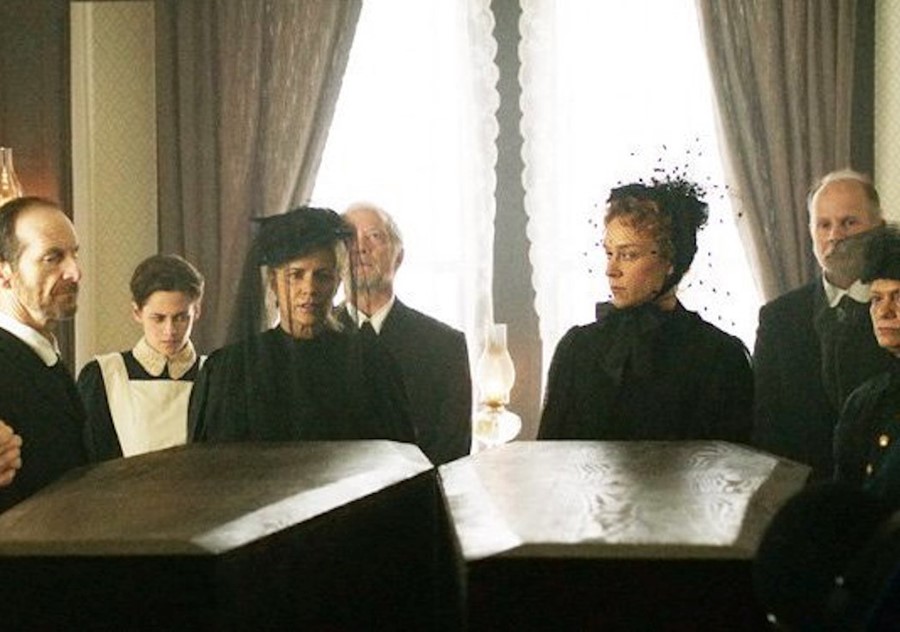
Piecing Together the Evidence
The police investigation launched itself through the problematic case. Emma Borden had an alibi. She was out of town at the time of the killing. Lizzie denied having anything to do with the violence but the cops made note of her actions immediately after the crime and her demeanor when they arrived. Lizzie was in the house during the attacks. It was improbable she didn’t hear them, but possible. However, even if she didn’t overhear the crime, why would anyone remain at a crime scene when they could be the next victim? Most people might want to get out of the house, but the 32-year-old unmarried daughter of the victims sat down and remained calm.
The crime scene, as reported by the Herald, was orderly and very little blood was found, in spite of the severity of the mortal wounds. Forensics was nowhere nearly as advanced as it is today. Europe had only recently proven circumstantial success with the art of fingerprint testing at the time of the investigation and the New England police were still skeptical about its accuracy. They refused to test the murder weapon, a hatchet found in the Bordens’ basement, for prints.
The police also noted a dress Lizzie burned on the morning of the killing. Borden said she burned it because it was covered in paint. The cops though it might have been covered in blood. Because of the extent of the wounds, whoever killed the Bordens would have been covered in blood after the attack. If Lizzie was the killer, she would have had to change and hide blood-soaked clothes after she killed Abbey, talked with the maid for 30 minutes, run downstairs to kill her father and then change again, the investigative timetable suggested. The maid later testified she opened the door for Andrew Borden after a walk around town, and heard Lizzie’s cry for help a few minutes after eleven o’clock. Elizabeth Montgomery’s character did the crime naked and showered off the blood in the 1975 TV movie The Legend of Lizzie Borden. The police dismissed a similar theory. If she did it naked, Borden would still have to bathe the blood off of her body, and her cheap father didn’t have indoor plumbing in the house.
The police ruled out the family’s twenty-six-year-old live-in maid Bridget Sullivan, played by Stewart in the new film. She was resting after she vomited up what she said was spoiled mutton stew. This adds a venomous subtext to the plot. According to the records, Lizzie attempted to purchase the poison prussic acid, also called hydrogen cyanide, at a local drugstore on August 3. She wasn’t able to get it because she had no prescription. At the inquest, Sullivan testified Andrew and Abby Borden had experienced stomach pains on the day before the murder. Sullivan testified that Lizzie was the only person she saw in the home at the time of the murders. Lizzie claimed she was washing outside windows. Maybe she was crazy from the heat? The attacks happened during an August heat wave.
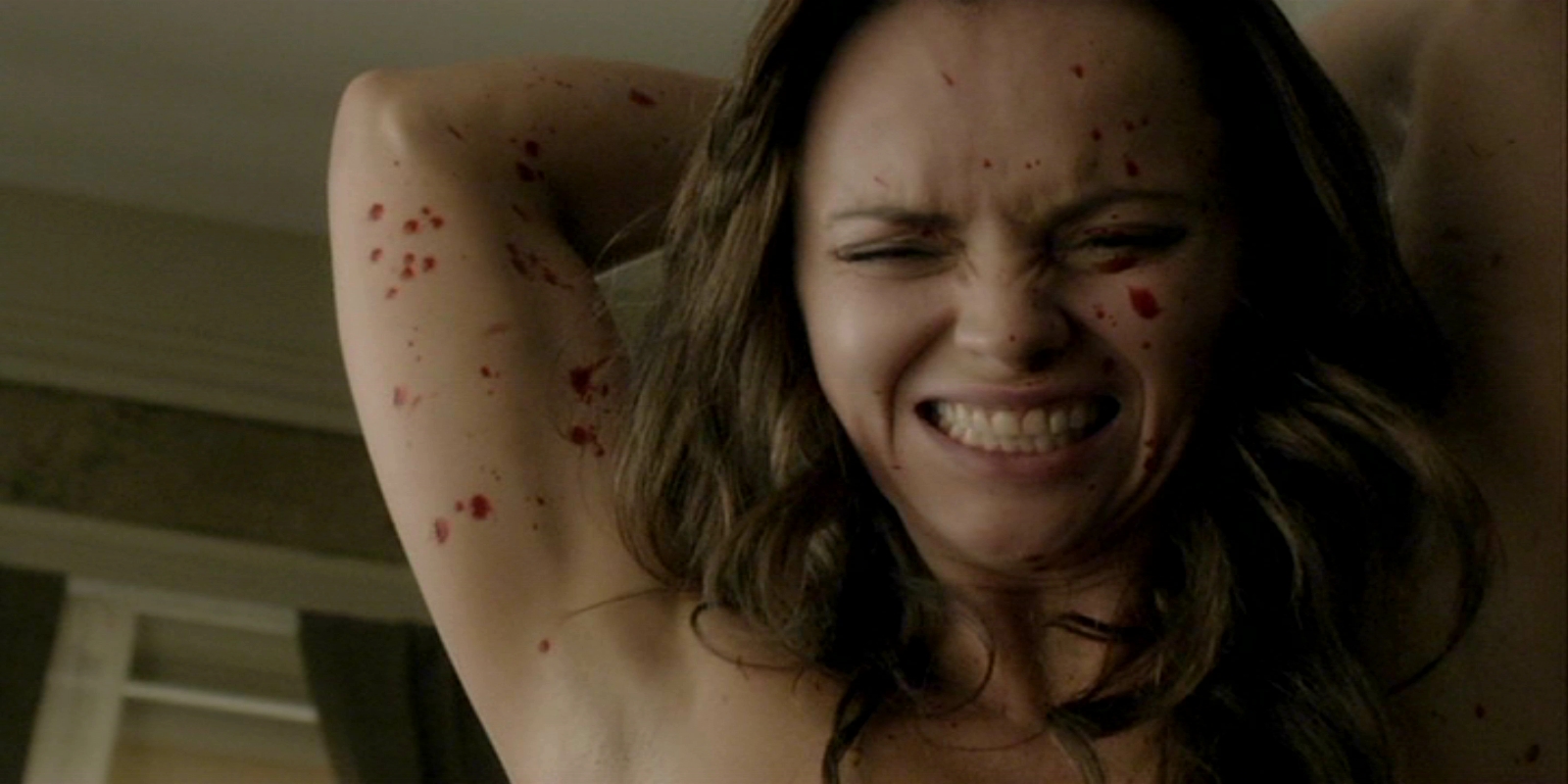
Inquest and Trial
The inquest was held in the courtroom over police headquarters on August 9. District Attorney Hosea Knowlton questioned Lizzie Borden for four hours. The criminal magistrate was Josiah Blaisdell. Borden’s testimony was reportedly confused and contradictory. She pleaded not guilty the next day.
Police Chief Hilliard arrested Lizzie Borden two days after the inquest adjourned. She was incarcerated eight miles to the north of Fall River in Taunton. Judge Josiah Blaisdell pronounced her “probably guilty” at the August 22 preliminary hearing in Fall River. Borden was ordered to face a grand jury in November.
The trial was sensational. The evidence was compelling, contradictory and circumstantial. There were no signs of a scuffle at the scene of the crime, besides the bodies. The Fall River Herald said medical evidence suggested that Abby Borden was killed by a blow that came from behind her, and the wounds would have been inflicted by a tall man. The paper reported a “Portuguese laborer” came to the Borden residence asking for wages but was blown off, according to Famous Trials. Andrew Borden was worth around seven million dollars adjusted for inflation, but he was cheap. According to the legends to come out of witness reports at the time, Lizzy’s dad amassed quite a few enemies because of his rude ways.
Further reading: Lizzie: A Story of Murder and Oppression
As to motive, the maid testified that, in the two years she worked for and lived with the family, she never saw any signs of friction between Lizzie and her stepmother. That was contradicted by dressmaker Hannah H. Gifford, who testified he heard Lizzie say she stayed in her room most of the time so she wouldn’t have much to do with “mean good-for-nothing thing” Abby. The police also questioned John Morse, who was staying as a guest in the house.
While Lizzie has been portrayed in both the reports at the time and in certain fictionalized portrayals as cold and unmoved by the wretched corpses she woke up to after napping, she reportedly fainted when she saw the severed heads of the victims, her own father and stepmother, as they were displayed as evidence in the court.
Lizzie Andrew Borden basically got off on a technicality. She was never read her rights. The judges ruled she was a prisoner charged with two murders at the inquest and gave her testimony without council, rejecting the state’s case that Lizzie was only a suspect at the coroner’s inquest. The prosecution rested its case on June 14. With little conclusive evidence, the jury took only 90 minutes to decide Borden was not guilty.
Lizzie and her sister Emma used their inheritance to buy a new house in a wealthy area of Fall River in 1905. The sisters lived in the house together until they had a falling out. Lizzie changed her name to Lizbeth, but was ostracized in her home town, where her neighbors refused to sit near her at church. Lizzie Borden died of pneumonia in June 1927, days apart from her sister. They are buried in the family plot next to her parents.
Further reading: The Real Texas Chainsaw Massacre: How Ed Gein Inspired Classic Horror Movies
While there is no possible or plausible connection between Lizzie Borden and Jack the Ripper, it is fun to point out that while the five murder victims (Mary Ann Nichols, Annie Chapman, Elizabeth Stride, Catherine Eddowes, and Mary Jane Kelly) conclusively tied to the Ripper were killed between August 31 and November 9, 1888, some people believe he committed 11 murders in Whitechapel in a killing spree that ended in 1891, one year before the Borden killings. The two crimes closed out the 19th Century as definitive mythology for the era.
Lizzie Borden blazed a bloody trail into the 20th century, which would see both violence and human rights remedies rise simultaneously. The daughter of the wealthy businessman stood up for her rights, either as a victim of familial abuse who got revenge or as a victimizer who got off and got paid. Borden stands today as iconic a historic character as Ed Gein, the Midwestern serial killer who inspired the films Psycho, The Texas Chainsaw Massacre and Silence of the Lambs. But Lizzie was no serial killer. She was an ax murderer. And while she wasn’t convicted and must be seen in our eyes as innocent of the charges, she is guilty of infamy and in the court of public opinion, dark fame rules.
Lizzie hits theaters on Sept. 14.
Culture Editor Tony Sokol cut his teeth on the wire services and also wrote and produced New York City’s Vampyr Theatre and the rock opera AssassiNation: We Killed JFK. Read more of his work here or find him on Twitter @tsokol.
